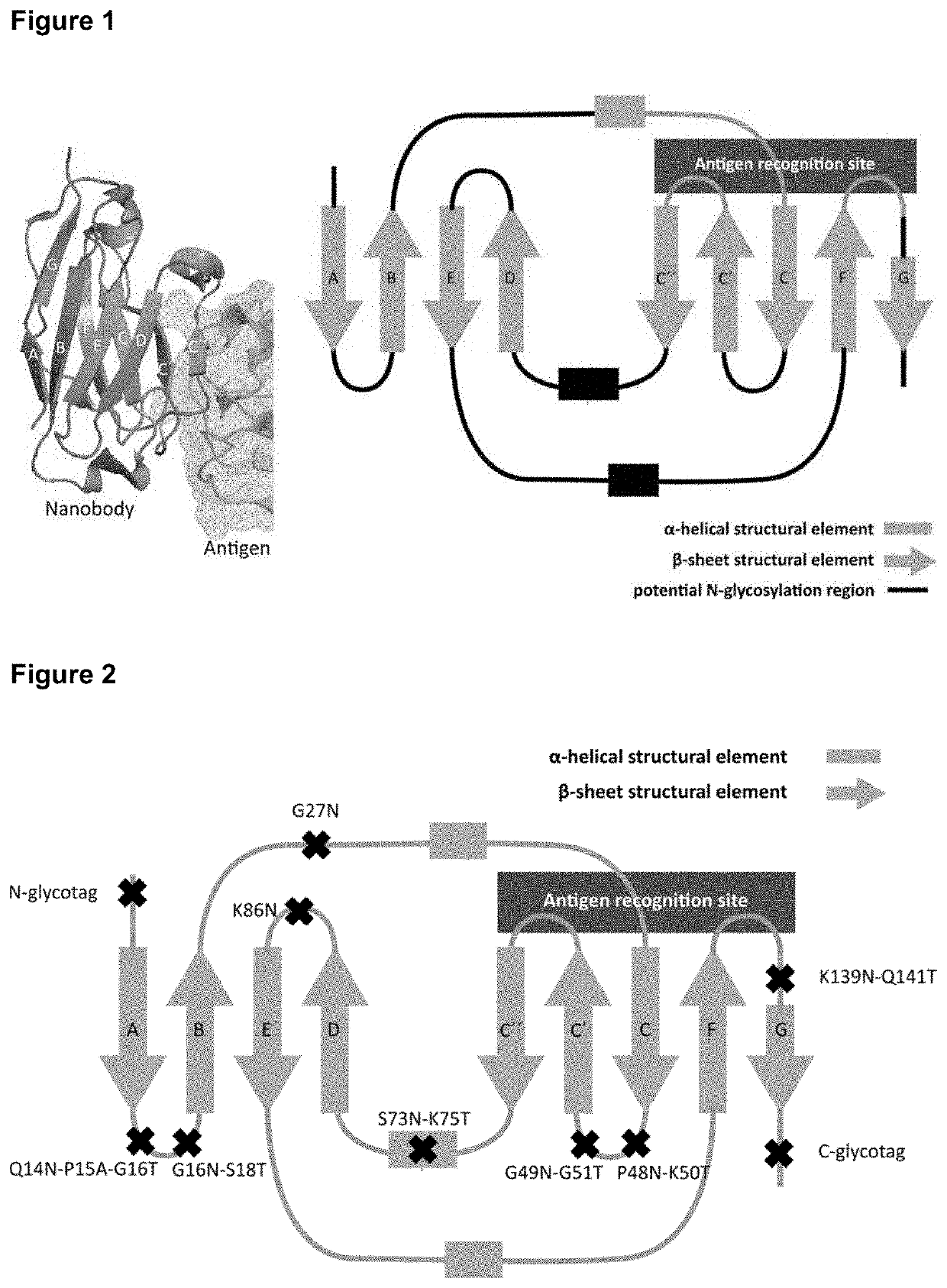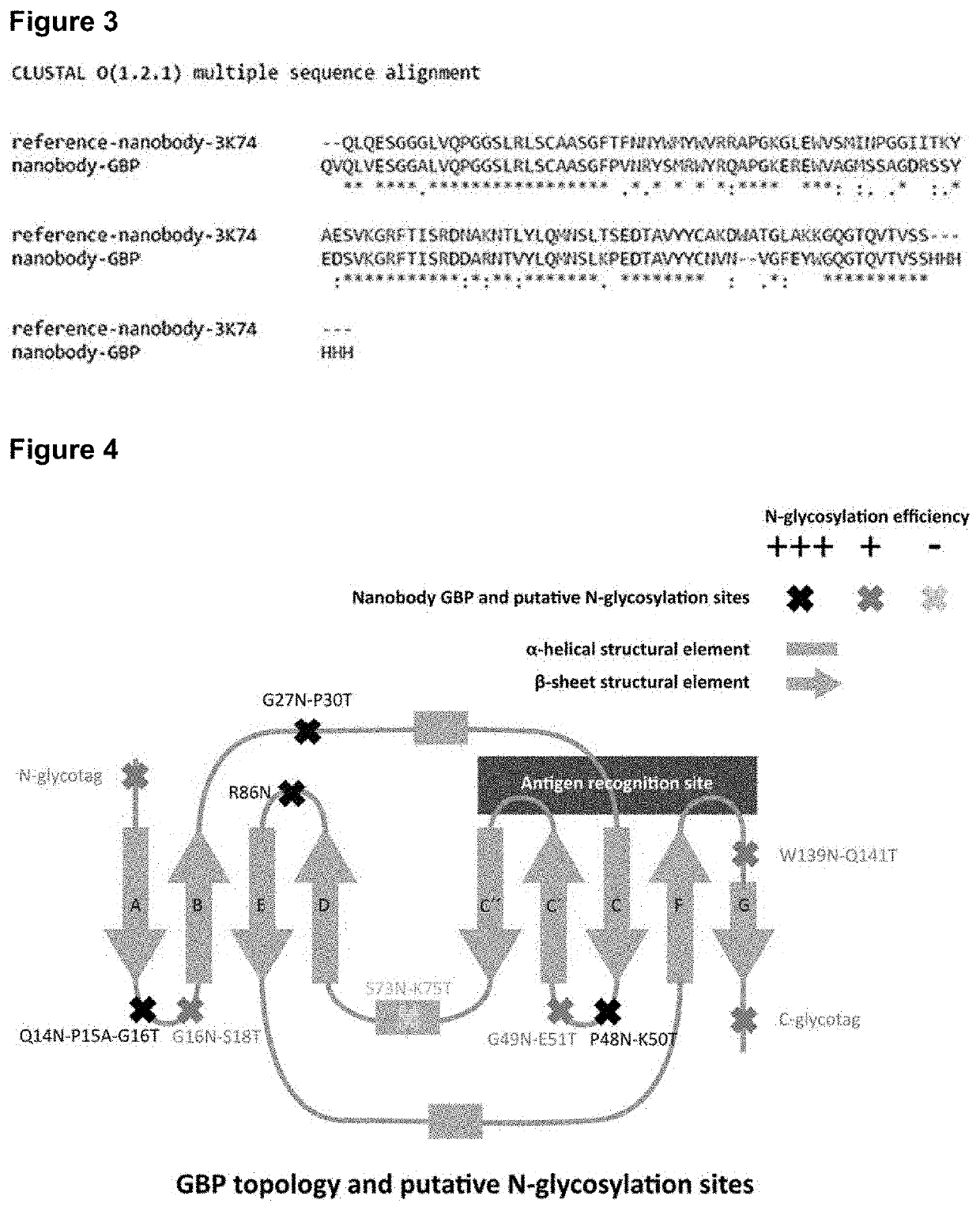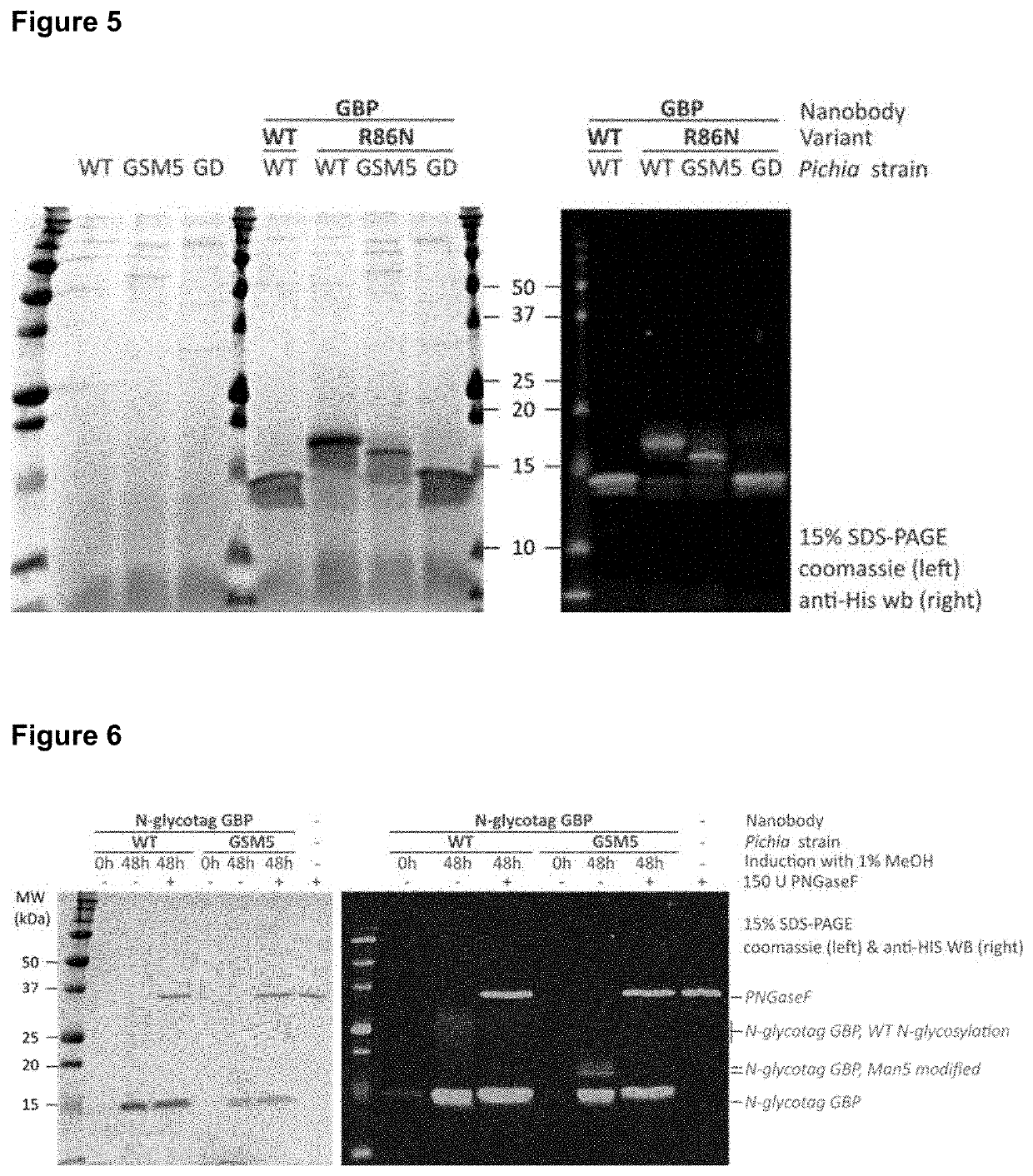Glycosylation of variable immunoglobulin domains
a glycosylation and immunoglobulin technology, applied in the field of glycosylation engineering, can solve the problems of small size of isvds, low site control of conjugation, interference with folding and antigen recognition, etc., and achieve the effect of efficient glycosylation
- Summary
- Abstract
- Description
- Claims
- Application Information
AI Technical Summary
Benefits of technology
Problems solved by technology
Method used
Image
Examples
example 1
Use of Crystallographic Data of ISVD Structures as a Rational Design Approach to Introduce N-glycans
[0193]In the present example we started from the available crystallographic structure of a representative immunoglobulin single variable domain polypeptide (chain B from entry 3K74 isolated from the RCSB Protein Data Bank, or in short: the PDB database; 3K74 contains two chains, id est the A chain (dihydrofolate reductase) and the B chain (the nanobody binding the dihydrofolate reductase); herein further we use 3K74 to specify the nanobody (B-chain) only) to identify regions in the structure suitable for the introduction of artificial N-glycosylation sites. This 3K74 ISVD polypeptide is a nanobody first described by Oyen D. et al (2011) J. Mol. Biol. 407: 138-148, and its secondary protein structure is schematically depicted in FIG. 1. In our rational design approach, we reasoned that potential regions in the secondary structure for the introduction of an N-glycan should not interfere...
example 2
Selection of 9 Hypothetical Regions in the ISVD for the Introduction of N-glycosylation Signatures
[0194]Based on our rational design approach and specific criteria outlined in Example 1, we selected a total of 9 regions present in the representative nanobody 3K74 (see FIG. 1, right panel, the 9 selected regions for the introduction of artificial N-glycan acceptor sites are depicted in black). In addition to the regions present in the beta-sheet structural elements, we projected the addition of an N- and a C-terminal glycosylation tag to the actual nanobody amino acid sequence depicted in SEQ ID NO: 1.
[0195]The amino acid sequence of nanobody 3K74, without any N- and C-terminal tags is depicted in SEQ ID NO: 1. In SEQ ID NO: 1 the CDR1, CDR2 and CDR3 regions are underlined.
[0196]SEQ ID NO: 2 depicts CDR1, SEQ ID NO: 3 depicts CDR2, SEQ ID NO: 4 depicts CDR3, SEQ ID NO: 5 depicts FR1, SEQ ID NO: 6 depicts FR2, SEQ ID NO: 7 depicts FR3 and SEQ ID NO: 8 depicts FR4.
(115 amino acids)SEQ ...
example 3
Proof-of-concept Using a GFP-binding Nanobody
[0198]A GFP-binding nanobody (abbreviated as GBP and published by Kubala, M. H. et al (2010) Protein Sci. 19(12)) was selected as the benchmark ISVD for the introduction of the 10 rationally designed and proposed N-glycosylation acceptor sites specified in Example 2. We included an artificial N-terminal glyco-tagged variant (QADDANATVQLVESGGA, instead of QVQLVESGGA in wildtype GBP) and also a C-terminal glyco-HIS-tagged variant (VSSLQAAAAAANATVAAASGDVWDIHHHHHH, instead of VSSHHHHHH in wildtype (HIS-tagged) GBP). All the GBP variants were equipped with a C-terminal histidine-tag (6xHIS) which facilitates purification and / or detection.
[0199]The amino acid sequence of nanobody GBP is depicted in SEQ ID NO: 9. In SEQ ID NO: 9 the CDR1, CDR2 and CDR3 regions are underlined.
[0200]SEQ ID NO: 10 depicts CDR1, SEQ ID NO: 11 depicts CDR2, SEQ ID NO: 12 depicts CDR3, SEQ ID NO: 13 depicts FR1, SEQ ID NO: 14 depicts FR2, SEQ ID NO: 15 depicts FR3 and...
PUM
| Property | Measurement | Unit |
|---|---|---|
| density | aaaaa | aaaaa |
| affinity | aaaaa | aaaaa |
| stability | aaaaa | aaaaa |
Abstract
Description
Claims
Application Information
 Login to View More
Login to View More - R&D
- Intellectual Property
- Life Sciences
- Materials
- Tech Scout
- Unparalleled Data Quality
- Higher Quality Content
- 60% Fewer Hallucinations
Browse by: Latest US Patents, China's latest patents, Technical Efficacy Thesaurus, Application Domain, Technology Topic, Popular Technical Reports.
© 2025 PatSnap. All rights reserved.Legal|Privacy policy|Modern Slavery Act Transparency Statement|Sitemap|About US| Contact US: help@patsnap.com



